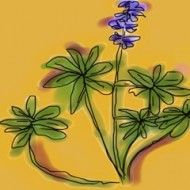To Maryland, with love
Some sites are easy to landscape, others aren’t. The job featured here wasn’t. Judge for yourself whether it was worth it by perusing this photo-essay of the conversion of a conventional garden to a wreath of Maryland’s native rudbeckias, lobelias, viburnums, junipers and asters. Those curious about plant identifications are encouraged to scroll beneath the pictures to the captions. For an all-out guide to gardening in the mid Atlantic, this resource directory, produced last spring for the Baltimore Banner, comes into its own again as fall affords an even more temperate window to establish new plantings.…
Behold the holly
Ilex opaca ‘Miss Helen’, Cylburn Arboretum, Baltimore, Maryland. Discovered by Stewart McClean in Anne Arundel County in 1936 and propagated by McClean’s nursery in Parkville, Maryland. Click here for a history from the Holly Society of America and click here for a story on some good winter garden berries in the Baltimore Banner.…
A fine mess
The photo series A year in a new garden documents the breaking out and replacement of a concrete driveway, big tree pruning, soil building, and sheet mulching of invasive ivy patches front and back. This snapshot, from a recent fall afternoon here in Baltimore City, is of the young patch of perennial wildflowers that replaced ivy in the back yard. The perennials planted last fall and last spring include milkweed, agastache, bergamot and giant blue lobelia. The goldenrod creeping in frame left is a welcome interloper from the neighbor’s yard. A pin oak sapling might just be visible in a slow effort to remove trees from under a power line and plant new ones well inside the garden borders. If it looks unkempt, it’s because the ground cover is largely left unmolested apart from reducing it with a string trimmer every couple of months. A perfect lawn isn’t perfect to …
Weather that drives you to the nozzle
With rainfall across Los Angeles less than half the putative average for this time of year, and forecasts making discouraging noises about the prospects for a “March miracle,” it’s time for dry gardeners to water.
As odd as it sounds to be prescribing irrigation after light rains blew through and before summer heat, for lack of meaningful precipitation, late winter is the time to charge unnaturally dry ground. The soil is still porous, so there should be no run-off. Shorter and cooler days check evaporation and native and Mediterranean gardens are growing now, so they need a drink before they slip into summer dormancy in May.
But use caution. This is by no means a recommendation for a return to lawn-style frequent and light watering. It’s not about pushing a lot of new growth. It’s a …
The Dry Garden: Fall planting season
The question comes every spring as our state flower, Eschscholzia californica, blooms. “Is it too late to plant poppies?” The answer is no, it’s not too late. It’s perfectly late. Whether sowing wildflowers, or planting perennials and woody herbs and shrubs, or putting natives into the ground, the best time to plant here is in late fall or early winter. The idea is to do what the plants do naturally: Get seed in the ground in advance of the coming rainy season.
Click here to keep reading this week’s installment of The Dry Garden in the Los Angeles Times…
keep looking »

